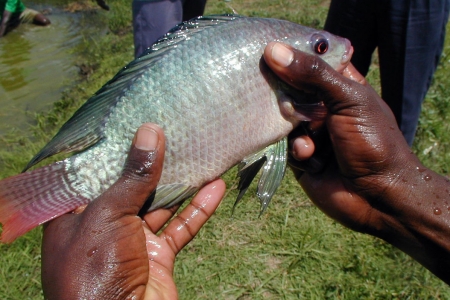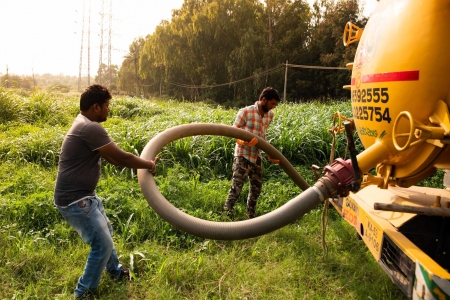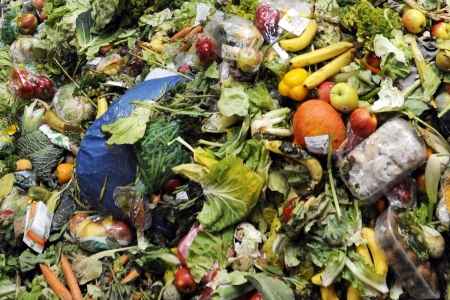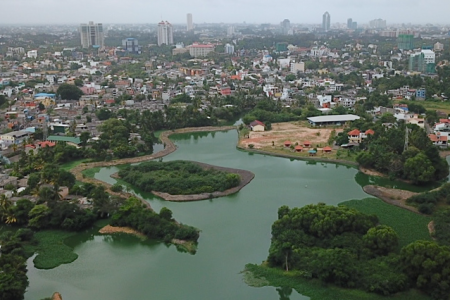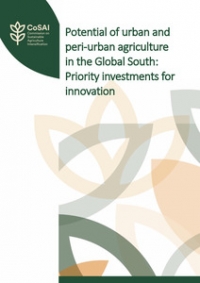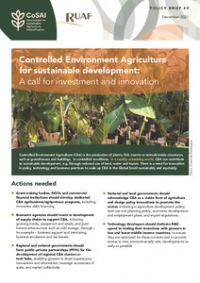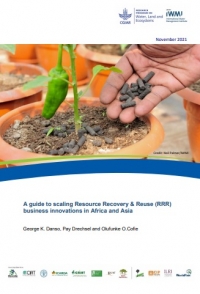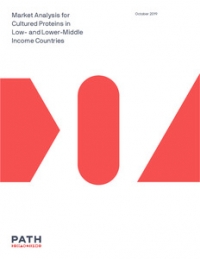During COP26, when climate change is high on the agenda, and political leadership scrutinized for commitments to reduce greenhouse gases (GHG), households might not always realize how they also contribute to GHG emissions, even those committed to using renewable energy at home. But we all eat, and food waste dumped on urban landfills is considered to be the third major anthropogenic source of methane. Reducing organic waste (especially food waste) and increasing resource recovery for reuse can help mitigate 3 billion tons of GHG emissions, while recycling nutrients for agriculture.
Globally, around a third of the world's food is wasted each year, worth billions of dollars. According to the Food and Agriculture Organization of the United Nations (FAO), it is also able to feed about 2 billion people - more than twice the number of undernourished people across the globe. The magnitude of this challenge is acknowledged in Target 12.3 of the United Nations Sustainable Development Goals (SDG), which aims to halve per capita global food waste (FW) at the retail and consumer levels by 2030.
Today, 800 million people don't know where their next meal is coming from, while tons of perfectly edible food rots in landfills and poor storage containers. Reducing food waste (FW) and losses is key to ending global hunger, fighting climate change and fostering healthy food systems -- and every person, school, restaurant or food retailer can be part of the solution. A big challenge, however, is how to convey this message?
In Sri Lanka, the International Water Management Institute (IWMI) and FAO joined hands to address this challenge. In the small island country, with a population of about 22m capita, total FW was estimated to be nearly 4,000 tons per day. As in other countries, these amounts, which constitute 55% of the total Municipal Solid Waste (MSW) generated in a day, are dumped in landfills. But finding suitable sites for landfills, especially in urban vicinities, is a huge challenge and can easily result in disasters like landslides, as experienced in Sri Lanka's commercial capital, Colombo, in 2016.
FW prevention and reduction should not therefore only be prioritized because of the lost food and nutritional value, but also because of the associated social and environmental impacts of its management. FW reduction measures could generate a triple win: benefiting the economy, contributing to food security, and reducing negative environmental footprints. Realizing the importance of the issue, this year the government of Sri Lanka launched a FW prevention and reduction roadmap in collaboration with FAO and IWMI who facilitated accompanying research and broad stakeholder consultations.
Data to quantify food waste
To support the development of the Roadmap, stakeholders had to understand their stake in the FW challenge, including the lost financial value, and the options they have to minimize losses. The lack of related data was one of the main obstacles holding back efforts to raise awareness and change behaviors, and would ultimately prevent the successful implementation of the Roadmap and related policies.
In 2020, IWMI researchers analyzed FW perceptions across different commercial stakeholders and piloted FW quantification trials with volunteering group members. In addition to households these included a hotel, a restaurant, a supermarket, a wholesale market and a hospital. These pilots were started to validate known approaches for FW quantification, prevention and reduction in the local context, allowing IWMI and FAO to visualize in accompanying workshops per stakeholder group what is possible also in Sri Lanka. The methodology of the pilots consisted of a four-phase approach, as described in a new WLE brief for hotel management:
- Phase 1: Quantify FW amounts and understand the causative factors at different operational stages
- Phase 2: Identify areas with reduction potential and possible strategies
- Phase 3: Implement selected reduction strategies, calculate return on investment (ROI), decide medium-to long-term actions
- Phase 4: Monitoring and Evaluation (M&E).
In this case study, the initial assessment found that 21% of the food prepared was wasted in terms of buffet surplus (46%), customer plate leftovers (33%) and waste occurring during preparation (21%). Fish accounted for 36% of the total cost of FW, and the monetary value of wasted meat, vegetables, starchy foods and rice were 20%, 17%, 12% and 10%, respectively.
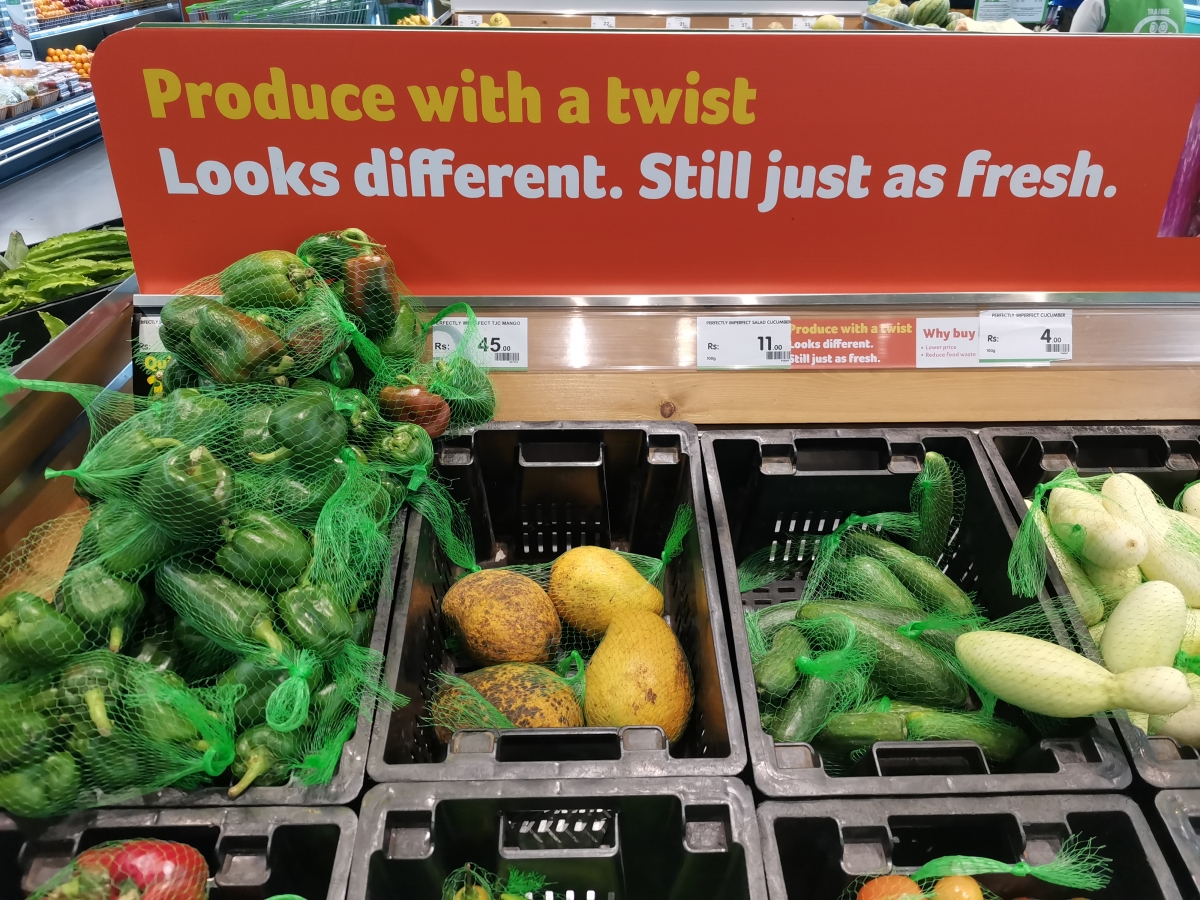
This detailed analysis was appreciated by management as it offered direct entry points (hot spots), not only for FW reduction but also cost savings. In this case, the value of the ingredients of the wasted edible food during the week was around LKR 439,500, or USD 2,350. This excluded labor costs and energy, and other ingredients such as oil, condiments and spices. Since the first phase of the pilot was between the Covid-19 related lockdowns in Sri Lanka, the waste quantities were not as high as under normal operations.
Prevention and reduction - the evidence
Hotel management and staff used these findings to design and implement several strategies to prevent and reduce FW. These included measuring daily FW at each point or source and displaying the value, purchasing pre-cut food items instead of bulk, and encouraging kitchen staff to use unconsumed edible food portions (stored under the required safety standards) for alternative preparations.
Following the implementation of these strategies, the second round of quantification was conducted three months later -- and the results were impressive. Per capita FW had reduced by 78%, allowing the hotel to save annually LKR 6.78 million (USD 36,257), while creating an additional income of LKR 195,000 (USD 1,043) from the sale/use of value-added products, like juice from unused fruits.
Monitoring and evaluation conducted by IWMI and FAO during follow-up visits showed that the hotel's management continued to measure FW, maintaining the per capita levels achieved after reduction strategies were put in place.
Shifting from practice to policy
The awareness, interest and data generated proved important for stakeholder workshops and scaling-up strategies. The data also verified that there is a financial case for reducing FW -- and this has also been confirmed by others, including, for example, the World Resources Institute (WRI). WRI's champion SDG 12.3 initiative created a data pool of almost 1200 business sites across 17 countries --and calculated that for every $1 invested, half of the surveyed sites realized a $14 or greater return. But there is also a non-financial business case -- motivators such as food security, waste regulations, environmental sustainability and corporate social branding.
Food waste can also become a profitable, or at least a social, business for those who can redistribute surplus or absorb the waste, for example to feed animals (see the Vavuniya University Conference proceedings, page 51-54). A new IWMI-WLE report is highlighting various related business options. In order to amplify its FW messages FAO is continuing to train stakeholders across the globe in FW measurement and reduction strategies using e-learning and workshops.
As the experience from Sri Lanka showed, mandating FW quantification must be accompanied by capacity building of the stakeholders on methodologies and tools for FW measuring, monitoring and reporting. As seen in the hotel case study, the willingness and commitment of all stakeholders to use the evidence for change, contributed to the sustained benefits. Using quantification data for a wider campaign to help commercial establishments and the public to understand and acknowledge the problem, could pave the way for innovative and sustainable solutions to FW. The work around minimizing food waste is accompanied by CGIAR efforts to measure and reduce food losses on farm and during post-harvesting activities for a set of commodities. The available tools supported by WLE's sister program CCAFS also allow us to estimate the impact of food loss and waste on GHG emissions from farm to households.
---
Thrive blog is a space for independent thought and aims to stimulate discussion among sustainable agriculture researchers and the public. Blogs are facilitated by the CGIAR Research Program on Water, Land and Ecosystems (WLE) but reflect the opinions and information of the authors only and not necessarily those of WLE and its donors or partners.
WLE and partners are supported by CGIAR Trust Fund Contributors, including: ACIAR, DGIS, FCDO, SDC, Sida and others.





